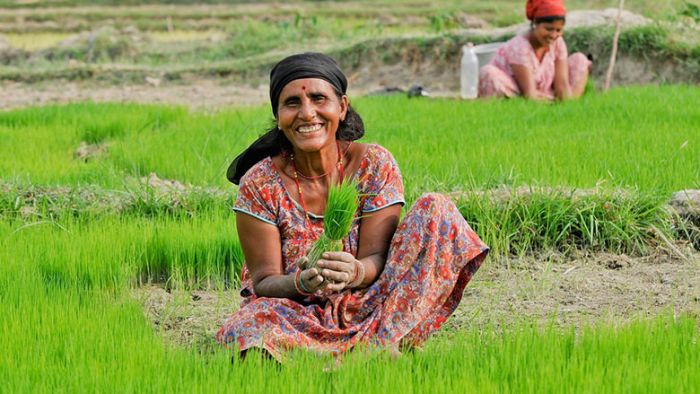
Agriculture should be the focus of this year’s Budget. Last week it is seen that some 66% of more than 21,400 respondents seeking a more agriculture-focused Budget. Not infrastructure. Not the services and manufacturing industries. But agriculture. Clearly, to enhance the ‘feel good’ factor, agriculture has to pick up.
Demonetisation compelled farmers to move towards cashless payments and digitalisation. Now they need greater ‘ease of doing business’ to harness that momentum. Here are five steps the Narendra Modi government could take to make that possible.
1. Encourage loans against harvests:
Entrepreneurs need capital. The harvest is a tenant farmer’s only renewable asset. Especially for women farmers. Banks, however, are reluctant to lend against small quantities of a crop, with inconsistent quality, stored somewhere far. Moneylenders and middlemen, living close by, step in. Farmers should be taught crop grading and sorting on a war footing so that harvests have standard quality. A regulated electronic repository can digitally maintain records of stored physical crops. Asking financial institutions to lend against these electronic records should be the next logical step.
2. Provide access to efficient and assured markets:
The market is efficient when farmers earn more and consumers pay less. Exchange platforms and other electronic markets are designed to enhance competition by connecting the largest number of buyers and sellers in the most cost-effective, transparent and regulated way. Farmer groups must be assisted to use them. Farmers also need a reliable safety net. Unlike other sectors, agricultural markets don’t self-correct. Low crop prices neither make us buy more nor prompt farmers to significantly cut production. So, farmers face long periods of low prices interspersed with flashes of high prices. Government procurement is dysfunctional as pulse farmers discovered last summer. Food ministry data shows that for wheat and rice, the maximum procurement centres are in Bihar, where purchase is negligible. Instead, market-based tools should be deployed to include more crops and farmers.
3. Don’t mix producer and consumer policies:
Agriculture sector can survive the kind of political risk that farmers face. Farmers themselves contribute 80% of the capital invested in agriculture. Like other businessmen, they invest in a crop after carefully considering the odds. But often, what starts as a good deal comes a cropper because midway through the marketing year, government coercively ‘corrects’ prices to protect consumers. When capital is used suboptimally or destroyed, growth weakens. Other investors shy away. Consumers should certainly be protected from food inflation. But not through knee-jerk measures that ultimately ruin rural livelihoods.
4. Incentives for resource conservation:
Farmers are overusing water and mining soil nutrients for higher productivity and production. In the absence of any economic incentives, they are less inclined to adopt water and nutrient-efficient technologies and practices leading to their un-sustainable use. Adoption of such technologies needs to be upscaled by providing subsidies on them. Crop residue management is another major concern in North-west India. Management of paddy straw is a serious challenge, machinery for which is costly and needs to be subsidised to promote its use. Punjab and Haryana have virtually mined water and exported to other states in the form of grains. These states, therefore, deserve to be financially compensated for this, so that they could design and implement some measures for recharging water and developing and promoting modern techniques for higher water use efficiency. A Groundwater Conservation Fund may be created, which should be allocated to such states which contribute for national food security cause at the expense of their natural resources.
5. Rural skill-development centres:
India faces the peculiar problem of a high rate of unemployment on the one hand and mismatch between available human resources and skill requirements of the industry on the other. Many empirical studies have shown that our education is not able to impart skills required for employability. The problem is more severe in rural areas. Therefore, skill-development centres in various trades need to be opened in large numbers in rural areas or in semi-urban areas which are easily accessible to rural youth, so that this rural workforce is able to get employment in industry or service sectors as well as may start their own small ventures. A fundamental change in the structure of education needs to be required. There should be two pathways after schooling. The intelligent students should move to the educational institutions of higher learning (universities and colleges), whereas other students go to skill-development centers to acquire skills that are required by the industry and services sector.